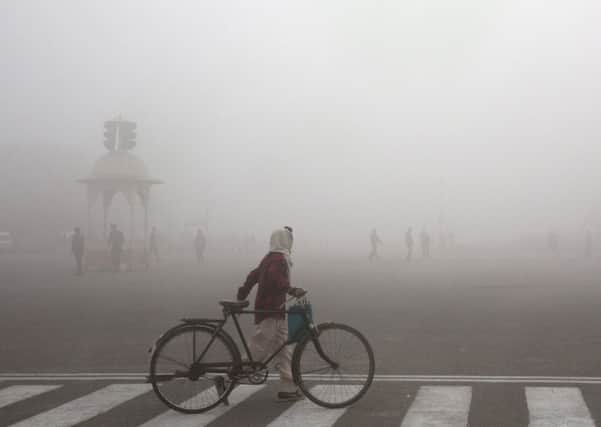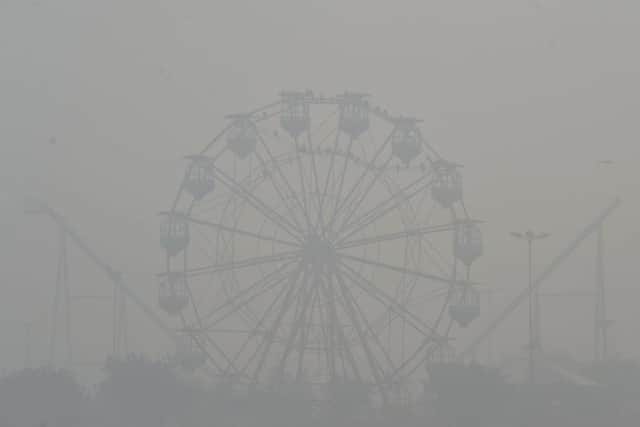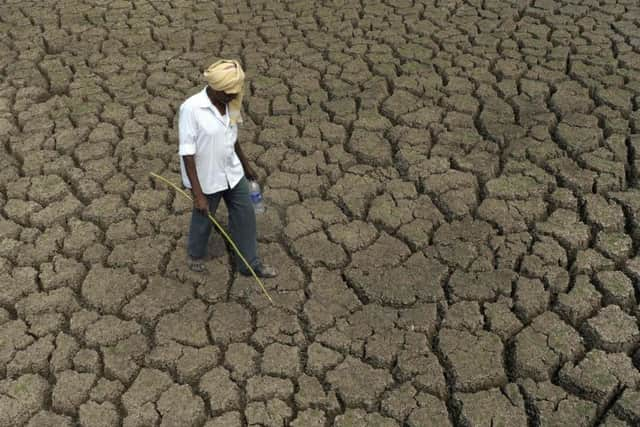Climate change: In India, the evidence is clear – Alexander McCall Smith


I have been visiting India for years. It is a country that very quickly gets under one’s skin, either in a negative or a positive way. Those who have a negative reaction tend to have it quite quickly and decisively. There are those who simply cannot take the sheer sensory impact of the country – its teeming millions, the traffic jams, the desperate beggars who knock on your car window with thin, staring infants in their arms. For some that is, quite understandably, too much. They yearn for less colour, less noise, fewer flamboyant wedding processions, fewer goats in the middle of the street – the list can become quite long.
For others, and I am one, the experience of India is almost entirely positive. They relish the sheer impact that the country has on your senses. This starts the moment you step out of the airport arrivals door into a throng of people and the hubbub that goes with any crowd in India. Everyone is pushing and shoving, waving to others, expressing themselves. There is an extraordinary current of human activity in the air: in India, everybody seems busy doing something, even those who appear to have nothing better to occupy themselves with other than to sit by the side of the road. Sitting by the side of the road in India is an engaging task. It is not to be done passively.


Advertisement
Hide AdAdvertisement
Hide AdI have just returned from my latest Indian trip, which was to Mumbai for the Mumbai Literary Festival, one of the world’s most interesting and well-curated literary festivals, followed by a week or so spent in an old fort overlooking the Narmada River in Madhya Pradesh, the very heart of the country. Now, back in Scotland, I think back on the trip and realise that in a sense on each visit to India I see less and less of the country. That may sound odd; what it means is that what you can actually see in India is closing in because the country is fairly rapidly becoming covered in a haze of smog. If you do not believe that pollution, going hand in hand with its off-shoot, global warming, is going to bring our planet to its knees, go to Delhi or any of the other big cities and take a deep breath.
A translucent white soup
Mumbai is not as bad as Delhi, although all the big Indian cities have badly polluted air. We stayed on the 31st floor of a magnificent hotel overlooking a curved bay. On the other side of the bay, I could just make out the headland of Malabar Hill. Looking in the opposite direction, it was hard to see very much at all. The nearer buildings could be made out, but beyond that everything was whitened by a translucent white soup of the sort you see in watercolours of misty landscapes. Occasionally this cloud would shift slightly, and a building or a ship might appear, but then it would close in again and the world would again become one of short distances.


In Delhi, the situation has become serious enough to lead to the closure of schools and the imposition of a rota-based car curfew. The press, and politicians too, have been spurred into action, and the debate is an intense one. But talking about the problem, even if that is an important first step, is not a solution in itself. The problem is just so large that, like many problems that India has to face, it is difficult to know where to begin.
Some of the causes of Delhi’s crisis are clear enough, but defy a quick solution. It is not just traffic emissions that are causing this problem, it is stubble-burning by farmers. The clouds of smoke this releases spread out across the northern part of the country, showering cities with toxic particles. These are added to the constant belching out of fumes by vehicles with dirty engines, giving the air a sharp acidic smell that attacks the throat and eyes. What it does to the lungs is even worse: living in Delhi, apparently, is the equivalent of smoking heavily every day. Some health reports suggest that six years is knocked off one’s lifetime by the simple fact of Delhi residency.
Think, then open your eyes
The fort in Medyha Pradesh was, fortunately, spared the cloud enveloping Delhi. It is in the deep countryside, even if Indore, which has a population of four million, is only two hours away by road. From my window in the fort, I looked down over several hundred feet of sheer drop, to the broad Narmada River below. This river marks the boundary between south and north India. It is very holy to Hindus, and along its banks there is temple after temple. The river itself is relatively unpolluted, and it is possible to bathe in it without risking immediate illness. That puts it in marked contrast to the fabulously damaged waters of the Ganges.
Bands of pilgrims gather on the banks, but these are much smaller crowds than those who flock to places like Varanasi. These are small groups – often just a single family – and they are welcoming to visitors. We were stopped and offered handshakes and smiles; we were invited to step into photographs, presumably because it was in some way auspicious to have a stranger in your picture. Down by the riverside at night, you may launch a candle on a tiny boat of stitched leaves. The candle floats off on the slowly moving surface of the water, a pinprick of light in the darkness. It is strangely moving to a see a host of them – 20 candles or so all floating off together – 20 human wishes, 20 human regrets perhaps,
What might one’s wish be on the banks of the Narmada? That this lovely, spiritual, fascinating country, with its generous and talented people, negotiates its way successfully through this great challenge that faces humanity in what could well be our final century? That all of us stop our constant squabbling and fighting, that we take a deep breath of what little air remains to us, and that we live together in co-operation and in harmony with the planet that is our home? Impossible thoughts, and yet, and yet... India is an ancient country, with an ancient message. Love of this world and our fellows is still a note that can be picked up amidst the cacophony of division and rancour we hear about us. I heard that note when, on the highest veranda of the fort, I lay down on a mat and listened to a yoga guru encouraging me to think about the common feeling that unites all creation. Close your eyes first, she said, think, and then open them.
